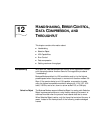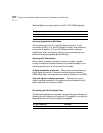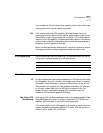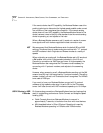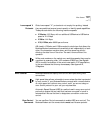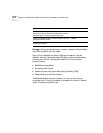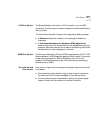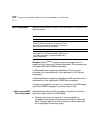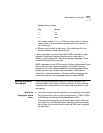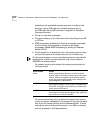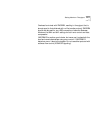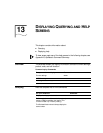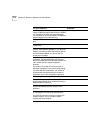
12-8
C
HAPTER
12: H
ANDSHAKING
, E
RROR
C
ONTROL
, D
ATA
C
OMPRESSION
,
AND
T
HROUGHPUT
Data Compression
Business Modems employ different data compression techniques during
data connections.
Example:
Sending
AT&K3
is used to transfer compressed files. The
modem will only negotiate for V.42bis compression. This command also
will disable MNP Level 5 (MNP5) compression.
If a Business Modem successfully establishes a V.42 error control
connection with a remote device, it also negotiates for V.42
bis
data
compression.
If a Business Modem successfully establishes an MNP connection with a
remote device, it also negotiates for MNP5 data compression.
The type of compression for a call, if any, is reported in the ATI6 display
and in the CONNECT message if the modem is set to &A3.
V.42bis versus MNP5
Data Compression
Business Modems using V.42bis compression negotiate the following
options and report them in the ATI6 display:
■
Dictionary size, that is, the amount of memory available for
compression table entries. (Entries are codes devised for redundant
data. The data is packed into shorter data units, called code words,
and unpacked by the receiving device.)
For the modem to Command
Disable data compression
AT&K0
Auto-enable/disable data compression. The Business
Modem enables compression if the serial port rate is
fixed (&B1) and disables compression if the serial port
rate follows the connection rate (&B0).
AT&K1
(Default)
Always enable data compression
AT&K2
Selective data compression. Use this setting to transfer
compressed files. The Business Modem negotiates only
for V.42bis compression, and disables MNP Level 5
(MNP5) compression.
AT&K3




